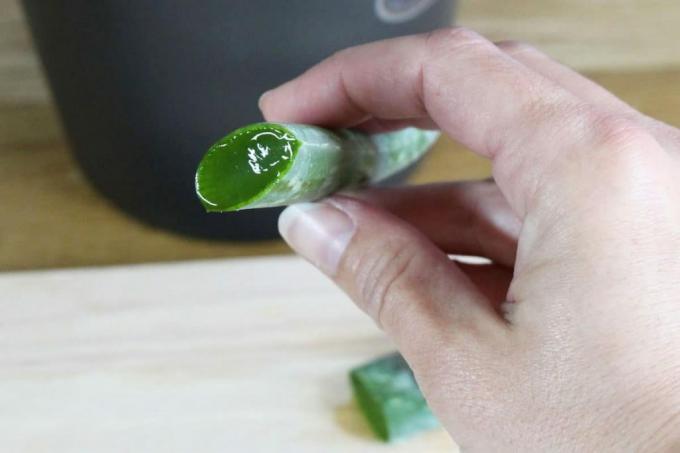
table of contents
- Aloe vera is poisonous in parts
- Effect on humans
- Aloe vera as a houseplant
- frequently asked Questions
the Aloe vera has been experiencing a real hype for some time. Initially only used as a skin cream, it can now be found in various dietary supplements. A reason to take a closer look and ask whether aloe vera is not poisonous.
In a nutshell
- The shell of the aloe leaves contains potentially deadly toxins (anthraquinones)
- The gel-like interior of the leaves, which the plant uses to store water, is edible
- Be careful when harvesting the leaves
- Drain the poisonous yellow sap
- Pets and small children are particularly at risk
Aloe vera is poisonous in parts
There is no general answer to the question of whether aloe vera is poisonous. Because the answer is both “yes” and “no”. A very clear “yes” can be stated for the outer leaf cover and the yellowish sap. Because it contains aloins and anthraquinones. The latter in particular has been shown to have several disadvantageous properties:
- toxic (poisonous)
- carcinogenic (category Carc 1B)
- labeled H350 by the European Chemicals Agency (ECHA)
Note: The classification of the carcinogenic properties has not yet been implemented in national law. The classification by ECHA is considered to be the state of the art and is therefore quasi-binding.
The situation is different, however, with the gel-like substance inside the leaf of aloe vera. This actually serves as the plant's water reservoir and does not contain any toxins. This gel is therefore included in a wide variety of products for external use as well as for consumption, for example in smoothies.

Note: Before you can use the gel, however, after cutting off the leaves, you have to drain the poisonous yellow juice that is contained in them.
Effect on humans
Depending on your constitution, body weight and, of course, the dosage, the toxins contained in the leaf cover and plant sap can cause various symptoms with increasing intensity:
- Disturbances in the water and electrolyte balance
- Intense loss of potassium
- Protein and blood in the urine
- Spasmodic pain
- Intense diarrhea
- Inflammation of the kidneys
Note: Even an amount of around 8 grams of the toxin anthraquinone can lead to death in healthy adults.
Aloe vera as a houseplant
The plant leaves are not always conscious or intended to be consumed. It is much more common that children or pets, especially dogs or Catswho discover plants as toys and inadvertently come into contact with the toxins. Children in particular tend to put things in their mouths, so the risk of contact is particularly high here.

Note: As for children, dogs, cats and other pets, due to the far lower body weight, much lower consumption quantities suffice to trigger symptoms of poisoning, in these cases you should carefully consider keeping the aloe as a houseplant think.
frequently asked Questions
Basically, the physiognomies of all mammals are similar. Therefore, the anthraquinones in aloe vera are just as dangerous for our pets as they are for us humans.
One reads again and again that leaves cut at the base of the stem can "bleed out" toxins in a glass of water. However, there is no guarantee that it will then no longer contain any toxins. Therefore, you should refrain from eating leaves that you cut yourself.
In theory, products that only use the gel of the leaves are not toxic. However, a wide variety of products are repeatedly detected in tests due to exposure to a wide variety of chemical products such as preservatives. These can burden the human organism just as much as the actual toxins of the plant. Also, contamination of the gel with components of the leaf envelope cannot be completely ruled out.



